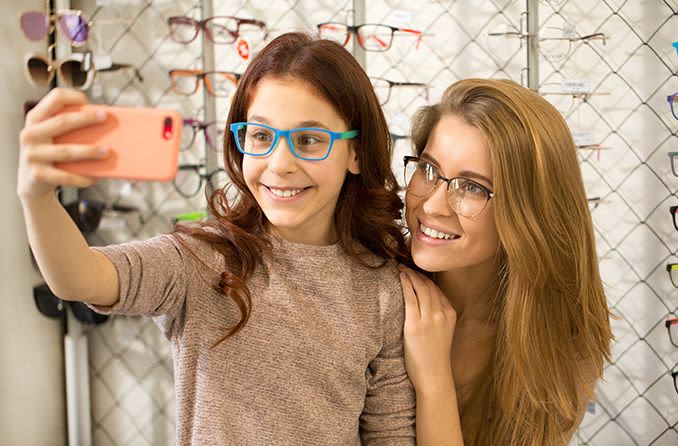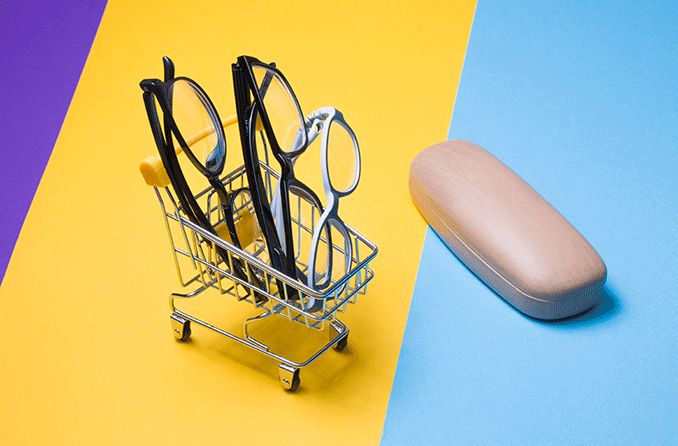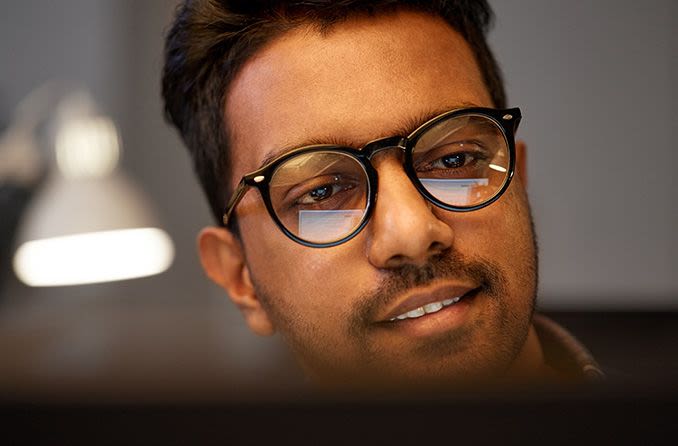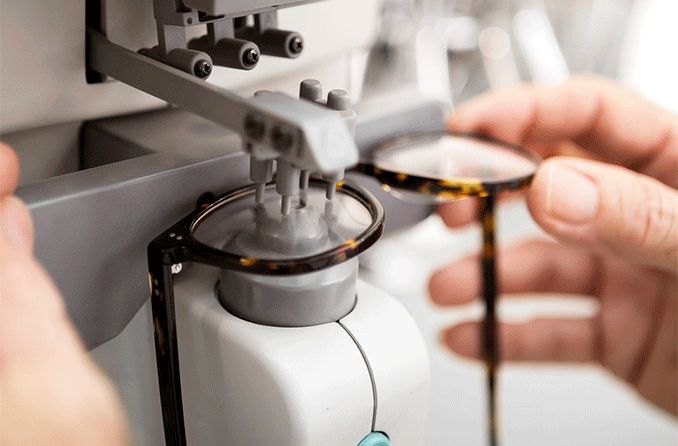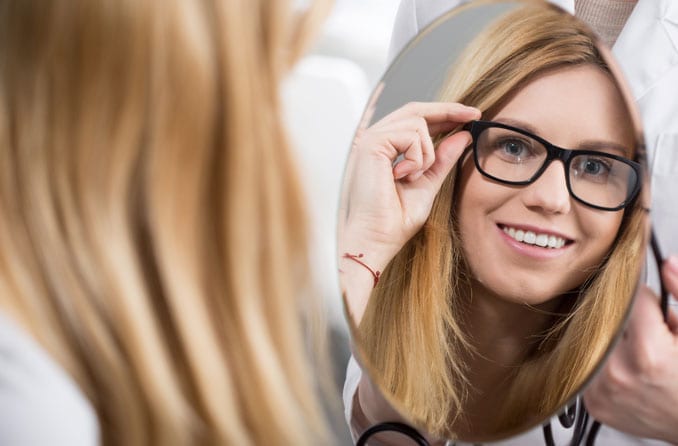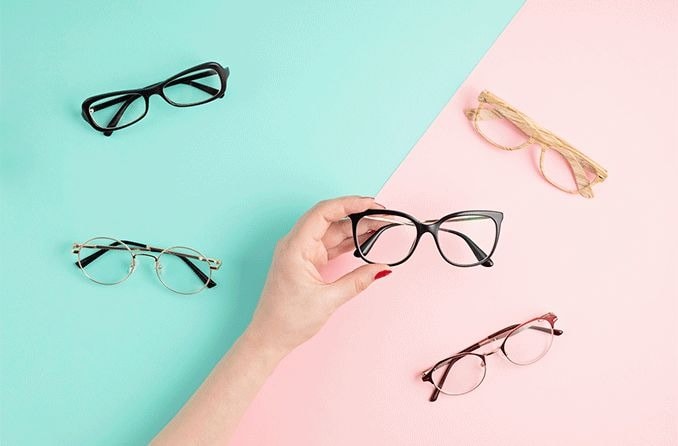Curious about the best places to get eyeglasses for kids? There are several options, from your eye doctor’s office to optical chain stores like LensCrafters, Walmart Vision Center or Target Optical.
Kids’ glasses are available through most of the same channels as glasses for adults, including through online vendors such as EyeBuyDirect, Eyeconic, Zenni Optical and FramesDirect.
What to consider before shopping for kids’ glasses
Where you buy your child’s glasses isn’t as important as making sure that you get a durable pair, made of quality materials, that fits correctly. Finding unbreakable glasses for kids tends to be important as children are notoriously less careful and far more active.
That said, it’s also important to work with a professional to find the right fit because children are less inclined to verbalize if a prescription seems off, and you aren’t trained to recognize if an adjustment is needed (or to properly make said adjustment).
Before letting your kid fall in love with the cool blue dinosaur frames, the first step when buying kids’ glasses is to review your vision insurance. You might find that your allowance is high enough that price is less important. Or you may decide your best bet is to find some cheap kids’ glasses since they may outgrow them quickly anyway.
You will, however, need to confirm that your preferred eye doctor and/or eyeglass provider accepts your vision insurance.
Even if you’re not covered, in most cases, kids’ glasses are not super expensive since they likely won’t need complex prescriptions like bifocals or progressive lenses.
Once you know which providers are covered by your plan, the process should begin with a thorough eye exam. “The correct measurements need to be taken, and the glasses need to be verified in person by an optometrist or optician,” says Kerry Gelb, a New Jersey-based optometrist.
After the eye exam is complete, it’s time to pick out glasses. It’s your job to help your child make the right choice so that he or she will be comfortable wearing them.
Here are some shopping options for buying kids’ glasses, along with what you should know about each one:
Option 1: Your eye doctor’s office
Some eye doctors have a large selection of children’s glasses in their offices. If you have vision insurance, there will probably be a group of children’s eyeglass frames that are covered fully or at least partially.
It's also likely they’ll have higher-end, children's designer glasses that may cost you a bit more out-of-pocket.
Option 2: An eyewear chain
Places like LensCrafters and Pearle Vision have optometrists and opticians in stores to conduct children’s eye exams, plus a large number of glasses from which to choose the best frames for your kid(s).
Buying your child’s glasses at an eyewear chain store may be among the more costly options, however. According to Consumer Reports, eyeglasses from popular U.S. eyewear chains cost an average of $234 per pair (paying out of pocket without vision insurance) vs. a median of $91.
Option 3: Eyeglass departments at big box chains and warehouse stores
Yes, you can buy kids’ glasses at places like Costco, Walmart and Target. While it might not be the first place that comes to mind when you’re thinking about where to buy eyeglasses for your child, a big box store or warehouse club vision center has eye doctors and opticians on-site.
In fact, purchasing your child’s glasses where you buy your family’s camping gear and a month’s worth of drink boxes is not only convenient, it may even save you money: The Consumer Reports study found that these discount retailers had an average out-of-pocket cost of $187 for eyeglasses.
Option 4: Online retailers
In the last few years, buying eyeglasses online has become popular due to the vast variety of frames available and the potential savings offered, as well as (again) convenience. But, when buying glasses for kids, doing so online can be tricky and isn't always recommended by eye doctors.
In fact, Gelb doesn’t recommend it at all.
Why?
A child’s pupillary distance needs to be lined up perfectly for the glasses to adequately do their job, he says, and, without a proper fit, the child may experience eye strain that they don’t know how to verbalize.
The other problem is that many opticians don’t want to take on the responsibility of adjusting frames purchased online, or, if they will, they might charge you for it.
SEARCHING FOR “KID’S GLASSES NEAR ME”? Find an optical store near you or shop online.
Some tips to buying kids' glasses online
If you want to give shopping online for your child's glasses a try, you should go by the following guidelines for the best results:
CHECK ALL THE BOXES: First, go with a reputable retailer that has a strong money-back guarantee and generous return policy in case you or your child is not happy with the finished product.
Do some research, even checking the Better Business Bureau before you shop.
TRY BEFORE YOU BUY: Of course, picking out glasses without physically trying them on can be tough to do, so look for online retailers that give you a chance to try before you buy. Some sites will send you a few frames at a time so you can see which one fits best.
Other sites have a virtual try-on feature that lets you see different frame styles on your child’s face using an uploaded photo and entering their pupillary distance. It’s less than ideal, but it can help you narrow down some options.
SHOP AT STORE, BUY ONLINE: One tactic you might consider is having your child try on different brands and styles in person at a brick-and-mortar eyeglass retailer. Take photos of your favorites and jot down the brands, model numbers, sizes and prices so you can search online for a better deal.
BUY FRAMES ONLINE AND LENSES IN STORE: You might also consider speaking to your eye doctor to see if he or she will fit prescription lenses into frames you purchase online, that way you can save money and get a proper fitting.
Of course, you can also purchase children’s glasses online complete with the prescription lenses. If you do this, you’ll have to get an in-person exam and then upload your child’s prescription.
AN OPTICIAN KNOWS BEST: While this may sound convenient in theory, you could be putting your child’s eyesight at risk: If you are sent the wrong prescription, a professional won’t be there to help you figure that out.
“Opticians are really the experts when it comes to getting glasses,” Gelb says.
What’s more, he adds, most well-known eyeglass retailers and private practices are careful about what they’re giving children because of liability, and will go above and beyond to give your child a high-quality product.
BOTTOM LINE: Ultimately, especially if you're shopping for toddler glasses, you are probably best served by working with an eye doctor and/or an optician in person — whether in a private office, chain store or big box store — and then picking out frames and lenses with their guidance.
This will help ensure that your child’s glasses are the right prescription and fit well.
READ NEXT: Best glasses for kids
